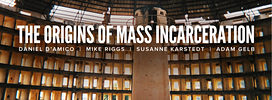Lead Essay
Daniel D’Amico begins his look at American mass incarceration by placing it in international context: Yes, we all know that we are a nation of jailers. But what have other countries been doing differently? Or the same? He notes that in recent years many other countries have dramatically increased their incarceration rates and incarcerated populations as well. He examines several proposed causes for our high incarceration rate, including racism, our free-market economic system, and our War on Drugs. He finds the latter the most persuasive of the frequently mentioned culprits. But then he proposes a new theory: Mass incarceration is particularly bad here - and in certain other countries - because of the public choice effects inherent in common law systems.
Response Essays
Mike Riggs agrees that concentrated benefits and dispersed costs tend to operate in criminal justice policy just as they do in many other areas of society, and that our criminal justice policy is much the worse for it. Politicians receive the benefits of the system, in that it pays to look tough on crime. The accused receive the costs, and it is difficult for them, as a diffuse and distrusted minority, to organize action to correct matters. But what, he asks, is the proper level of incarceration? The purpose of our penal institutions is not to “terrify the poor into perpetual obedience.” It is to impart respect for the law, to deter crime, and to reintegrate former offenders into society in ways that will ensure they do not offend again. Our current system is manifestly a failure at these tasks, and Riggs recommends that we turn to penalties other than prison for a significant number of crimes that are now met with prison terms.
Some states imprison vastly more than others, and it has nothing to do with their crime rates. In some, driving with a suspended license is a leading cause of prison time; in others, it is no cause for prison at all. Mandatory sentences, opportunities for early release, and how states treat administrative violations by former offenders all greatly influence various states’ prison populations. In a textbook example of public choice theory, the state government often pays for the prison system, while the local government pays for community supervision. As a result, local governments send former offenders back to prison as a way of saving money - at least in their own local budgets. Analyzing problems such as these at the state level can tell us much more about mass incarceration than international comparisons.
Susanne Karstedt looks at the relationship between wealth and imprisonment. Is it really the case that neoliberal nations prefer to warehouse their poor in jails? She finds that the evidence supporting this claim is weak. Yet budget constraints seem to reduce incarceration rates, and she says it’s no coincidence that mass imprisonment seems to have peaked and come to a halt in 2009. Ideologies can change, she argues, and conservatives - who once led the charge to get tough on crime - are now at the forefront of rethinking our overgrown prison system. Nations can change as well, she argues, and she cites Germany as a particularly good example of humane and effective imprisonment.
Coming Up
Essays by Mike Riggs, Susanne Karstedt, and Adam Gelb; discussion through the end of the month.
Related at Cato
Cato Unbound: “Behind Bars in the Land of the Free,” March 2009
Cato Policy Research: Criminal Justice and Law Enforcement
Cato Policy Report: Three Years of PoliceMisconduct.net

